If you’ve ever felt bogged down by boilerplate code or repetitive setup tasks, you’re not alone. Vibe coding is all about using AI-powered tools that help you skip the tedious parts of development so you can focus on the core logic. These vibe coding tools are lowering the barrier to entry and drastically increasing developer productivity. What once took hours can now be done in minutes with the right tools.
To help you pick, we’ve curated a list of the Top 5 Vibe Coding Tools of 2025, complete with pros and cons for each. A Vibe Coding Score will be assigned to each tool to reflect how effectively it allows beginners to turn ideas into functional code with minimal setup, technical knowledge or manual coding.
Let’s get started!
1. Lovable
If you’re a complete beginner, Lovable is the best vibe coding tool for you. Just describe your app and Lovable builds it.
Vibe coding score: 10/10
Standout feature: Natural language to full-stack web apps
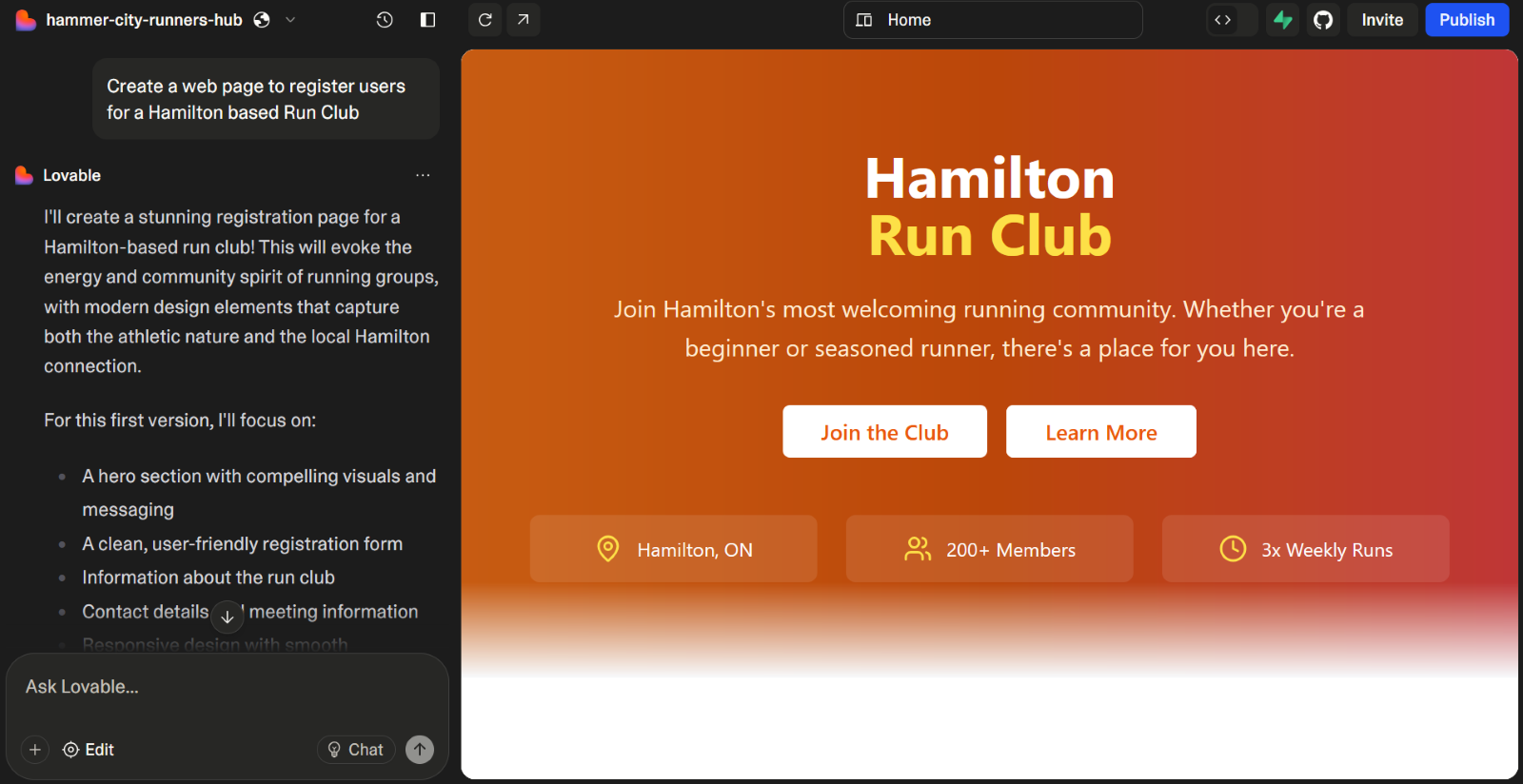
Lovable generating a registration page from a single line prompt
Pros:
- Zero code start
Lovable is completely accessible to non-developers. It enables users to describe their app ideas in natural language and the AI generates a working application. Even more beginner friendly than Replit.
- Full code access
Unlike some no-code platforms, Lovable provides full access to the code, offering some level of customization.
- One-click App Deployment
Lovable provides built-in hosting and deployment which completely eliminates the need for third-party hosting services.
Cons:
- Limited customization
Even though lovable generates full applications, advanced customization is limited. It handles standard use cases well, but highly specific customizations may require manual coding which will not be possible for complete beginners.
- Not ideal for learning to code
Since Lovable does most of the work for you, it’s not ideal for those learning to code. Windsurf and Copilot give you more hand-on exposure to actual programming.
- Free plan limitation
Advanced features are only available through paid plans.
2. Replit
For beginners, Replit is one of the easiest ways to start building without the headache of setup.
Vibe coding score: 9/10
Standout Feature: Browser-based full dev + deploy flow
You can go from idea to deployed app in your browser without installing anything which is great for quick projects, teaching, or coding on the go.
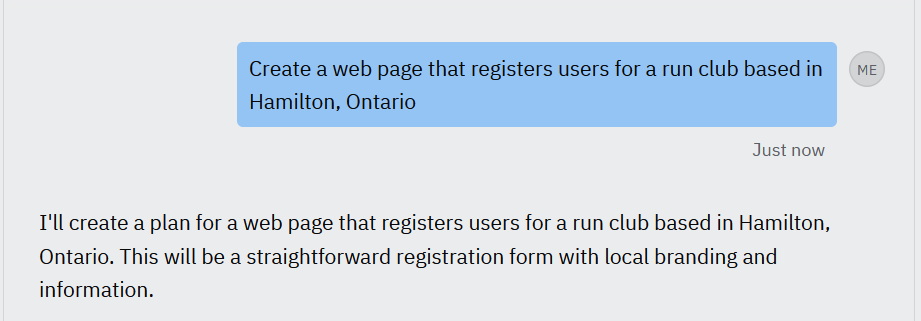
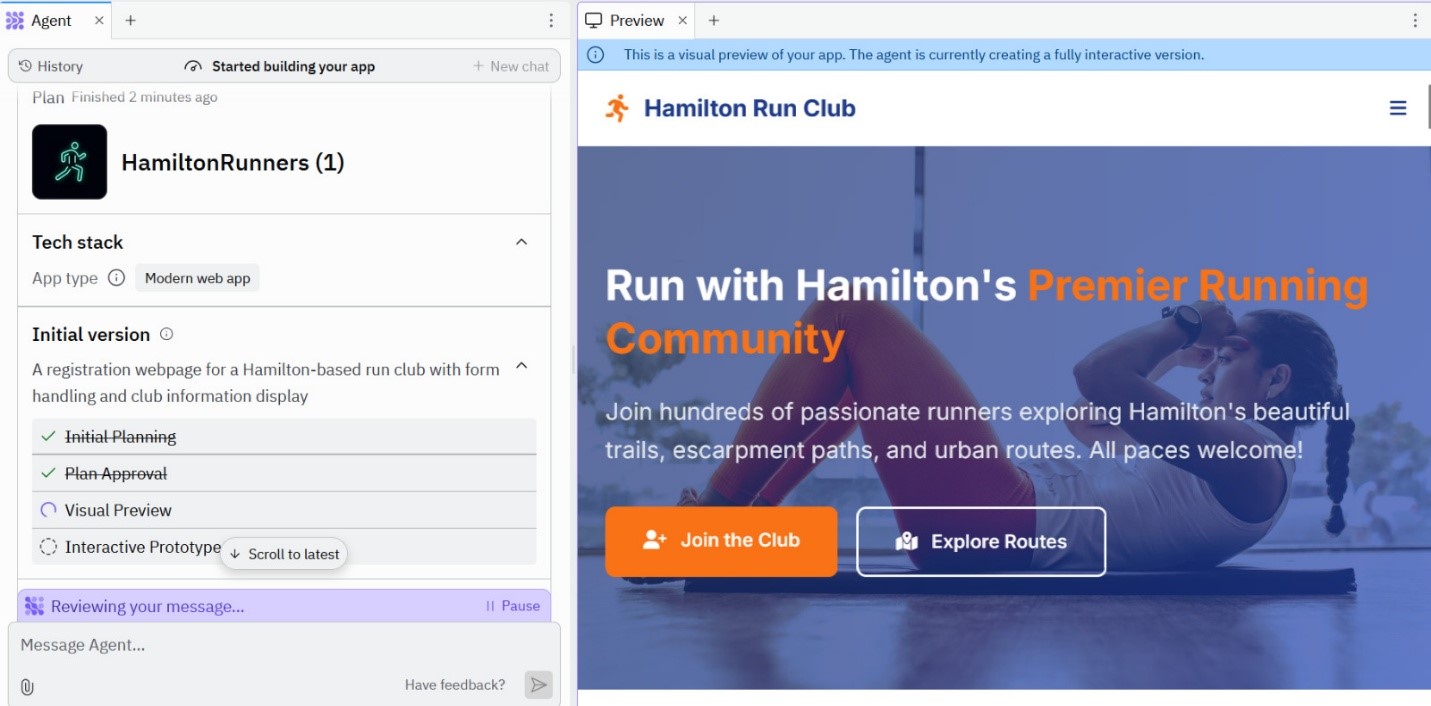
Replit instantly generating a visual preview based on the prompt
Pros:
- Beginner friendly interface:
Makes starting and managing projects easier for people with little programming experience
- Ease of accessibility (cloud based, no installations):
Users can access projects on any device easily. This is also highly convenient for those who don’t want to set up programs on their device.
- Ease of collaboration + social component
Users can browse, remix and fork other users’ Repls.
Cons:
- Performance issues (with complex projects)
Users have reported performance issues, particularly with complex projects. This limits effectiveness for advanced or resource-intensive tasks.
- Limited free access to AI assistance
The free plan provides limited access to AI tools. One of the paid plans is required for full access.
- Limited debugging tools
Its debugging tools a functional but not nearly as comprehensive as those found in some desktop IDEs such as VS Code.
3. Windsurf (formerly Codeium)
A great middle-ground tool which is smarter than Copilot, more flexible than Replit, but still assumes some coding experience.
Vibe coding score: 8/10
Standout feature: Cascade AI agent with multi-file awareness
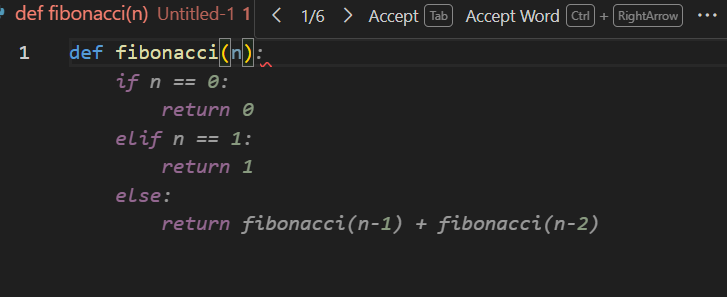
Windsurf autocompleting a Python function
Pros:
- Context-aware AI agent
Windsurf provides an AI agent called Cascade which understands and interacts with your entire codebase, enabling multi-file edits. Unlike Copilot which only works in the active file, Cascade is fully context aware.
- Windsurf chat with citations
The chat shows you inline citations so you can trust that Windsurf is pulling information from the right places.
- Supports 70+ Languages + tools
Compared to Lovable, Windsurf supports a wider range of languages and is better suited for professional development teams.
Cons:
- Learning Curve for Prompt Structuring
Beginners may need to learn to provide clear and well-structured prompts to get the most out of Windsurf.
- Not ideal for learning to code
Like Lovable, it automates a lot. You might not learn as much.
- Limited access to features
Similar to Replit and Copilot, the free version is functional but limited. For additional credits and more app deploys/day, you need one of the paid plans.
4. GitHub Copilot
Copilot is powerful if you already understand code because it won’t teach you, but it’ll autocomplete like magic.
Vibe coding score: 7/10
Standout feature: Seamless autocomplete in real code
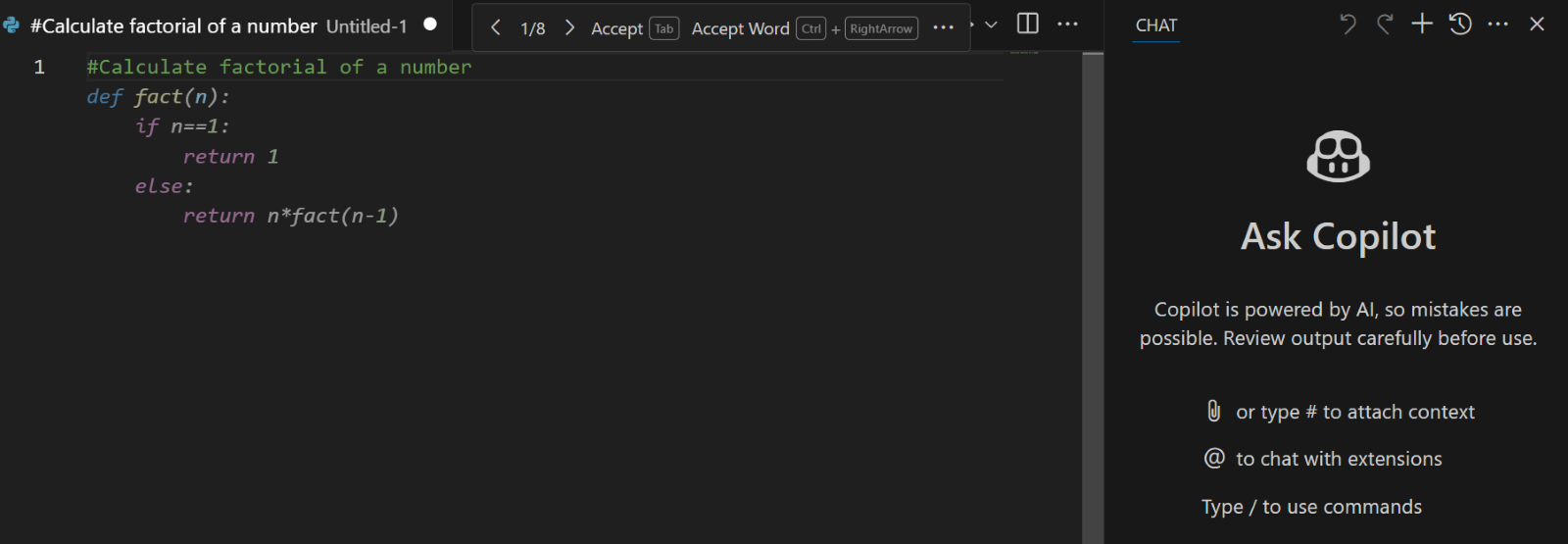
Copilot autocomplete based on the comment
Pros:
- Great language + framework support
Copilot is trained on a wide variety of languages such as JavaScript, Python, Java, Ruby, Go, PHP, C++, C# and more. In addition, it offers assistance with various frameworks such as React, Angular, Node.js, Django, Flask etc.
- Learning opportunities for Developers
Developers can learn new coding patterns and alternate ways to write code by reviewing Copilot’s suggestions.
- Reduction in common errors
Copilot can help reduce common coding errors by providing commonly used solutions
- Familiarity
Since Copilot integrates seamlessly with popular IDEs like Visual Studio Code, it ensures a smooth user experience.
Cons:
- Learning curve for beginners
Understanding how to effectively use Copilot’s suggestions may take some time and effort. Unlike Lovable or Replit, it assumes you understand code context.
- Code quality varies
While some suggestions may be useful, some may be inefficient, or even incorrect.
You can easily avoid this by reviewing suggestions before using them.
- Privacy concerns
Copilot learns from public code repositories which raises concerns about copyrighted code in its suggestions.
- Lacks true contextual awareness
While it understands surrounding code relevant to the current function or file, it lacks true contextual awareness as it doesn’t always understand interdependencies across multiple files.
5. Cursor
Cursor is an AI-enhanced IDE built on Visual Studio Code, created to speed up development. It provides intelligent autocompletion and real-time code suggestions which allows developers to write cleaner code with minimal effort. Since it’s a fork of Visual Studio Code, it allows developers to integrate it into their setup with minimal changes.
Vibe coding score: 6.5/10
Standout feature: Agent Mode + Project-wide understanding
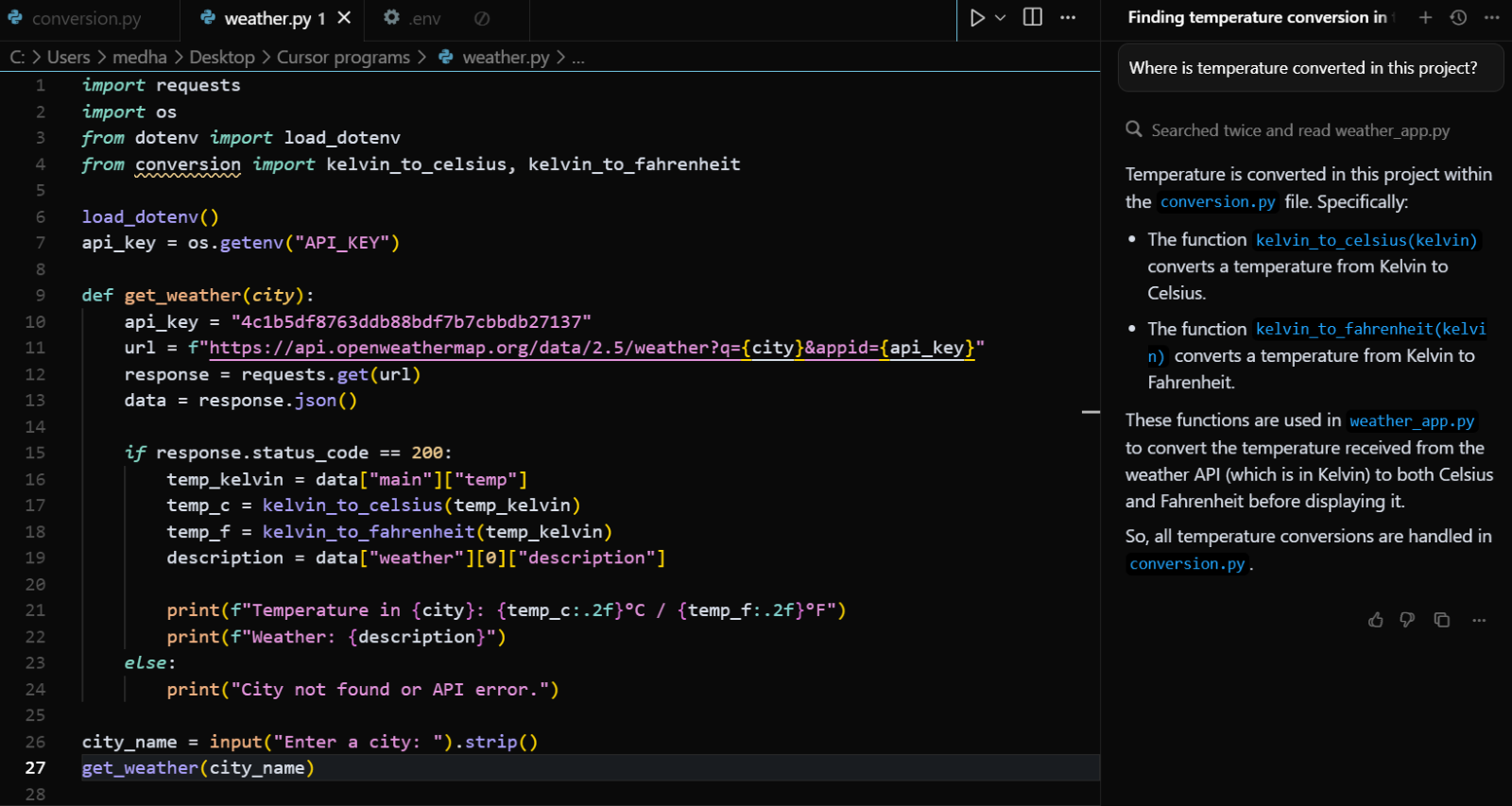
Cursor demonstrates project-wide understanding in its answer
Pros:
- Familiarity
Since it’s built as a fork of Visual Studio Code, it retains all of VS Code’s familiar features. It supports extensions, themes and keyboard shortcuts. This ensures a seamless experience for those already using VS Code.
- Context-awareness
Unlike traditional autocomplete tools, Cursor reads your whole project. This ensures that it provides accurate responses to your questions. It also helps reduce time jumping between files.
- More room for customization
Since it’s code-first (not no-code), users have full control over AI-generated code and extensions. They can modify AI suggestions and integrate extensions.
Cons:
- No real time collaboration
Unlike Replit and Lovable which support collaboration, Cursor is a solo development environment.
- Intimidating setup for beginners
Users need to be familiar with API keys, git repositories and coding fundamentals. Users that have never used Git before may feel confused even when opening or saving their project in Cursor.
- Need your own API keys
Cursor does not give you unlimited access to models like GPT-4 by default. Users need to create an account with OpenAI, generate a key and manage their usage properly. This may dissuade complete beginners.
- Limited free access to Premium AI models
Access to models like GPT-4 and Claude 3.5 Sonnet is only for the subscription-based plan Cursor Pro. The free plan has limited or no access to these models.
TL; DR
Below is a quick recap of the top vibe coding tools as discussed above
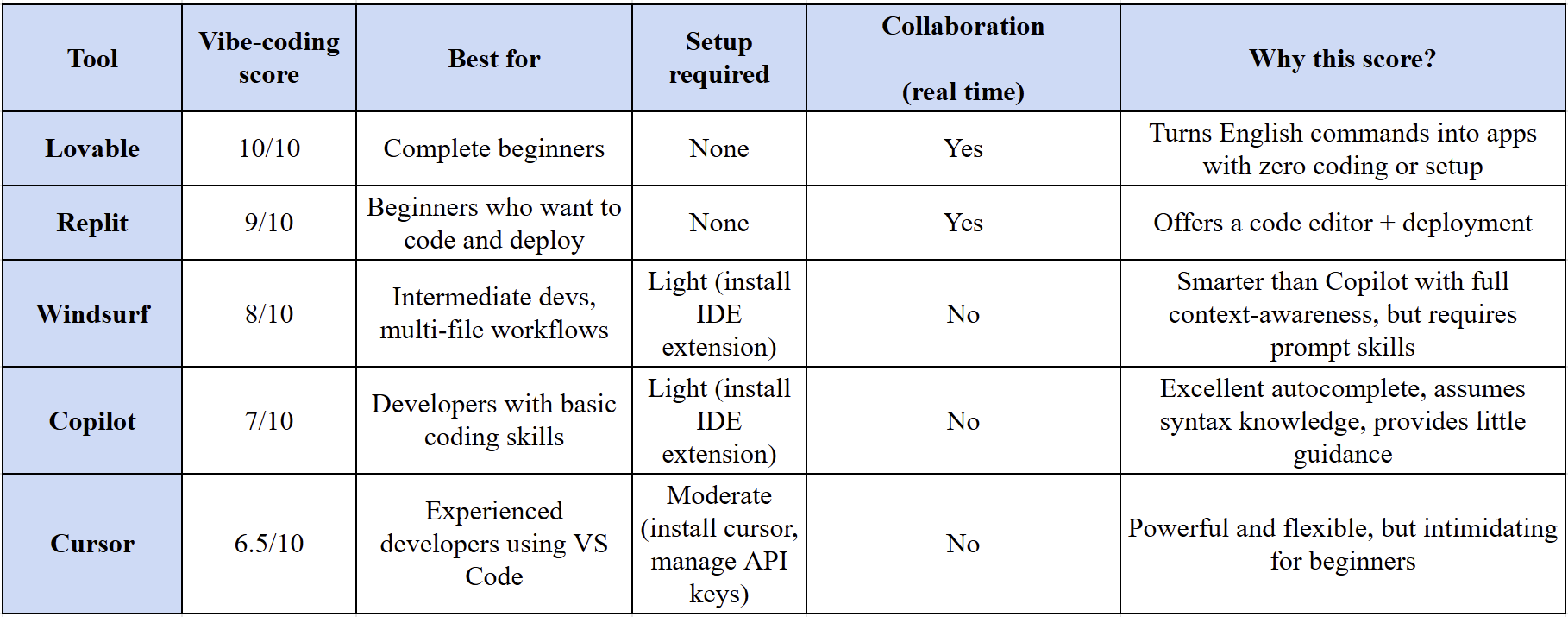

.jpg)



.webp)




.jpg)

.png)








.png)